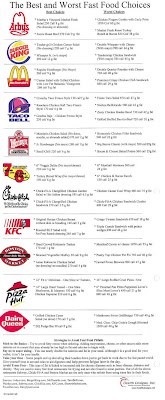
Friday, May 30, 2008
Old Gas Pumps in New York Won't Go Over 3.99$ A Gallon!
For a brief moment on Wednesday morning, the gas pump at Gary Staiano’s Texstar service station in Bellerose, Queens, turned into a time machine. After 11.3 gallons was pumped into a Pontiac Grand Am, the meter read $23, or $2.03 a gallon, a price not seen in more than three years.
Then Mr. Staiano transported his customer back to reality when he doubled the total at the cash register. Using pumps so old that the meters go only as high as $3.99 a gallon, Mr. Staiano began pricing his gas by the half-gallon this week, just as station owners did when gas prices skyrocketed a generation ago.
“Some people say I got the cheapest prices in town” until they see the receipt, said Mr. Staiano, 50, who started pumping gas as a teenager and remembers when it rose above $1 a gallon for the first time in the 1970s.
As the average price of a gallon of regular gasoline in New York City hit a record $4.20 on Wednesday, the State Bureau of Weights and Measures gave station owners like Mr. Staiano the official go-ahead to charge by the half-gallon, provided they can prove that they have ordered new pump computers that can handle prices up to $9.99 a gallon. The new computers cost about $400 each, not including installation fees; Mr. Staiano said his would arrive in about a month.
Experts estimate that as many as 500 stations across the state, most of them independently owned, have older pumps that are unable to go above $3.99. A handful of such stations are sprinkled around the city and suburbs, including a Getty pump on Kings Highway in Brooklyn and another on Broadway in the Bronx, according to Newyorkgasprices.com. Other stations are on Long Island in Cedarhurst, Elmont and Hewlett.
By the end of the business day on Wednesday, the state had received 40 applications from stations wanting to charge for gasoline in half-gallon increments. There is a backlog of up to 17 weeks for the replacement machines from various companies, so state officials expect half-gallon pricing to be around for about five months.
“It’s an interim fix to this problem,” said Jessica Chittenden, a spokeswoman for the New York State Department of Agriculture and Markets. “There is a national shortage of these computing devices.”
There was little rush to get the new pumps until a few months ago, when gasoline prices kept climbing. As prices blew past $4 this month, stations with older pumps turned into bargains overnight for drivers lucky enough to spot them.
Of course, what the drivers saved, the owners lost. Mr. Staiano said his profits were trimmed by 6 cents to 8 cents a gallon when the pumps were stuck at $3.99 (and 9/10). That is why he began charging by the half-gallon a couple of days ago, when, he said, state officials told him an approval was imminent.
“I could absorb it for a little while,” he said. “But we’re not here to lose money.”
The state previously let stations charge by the half-gallon in the fall of 2005, when gas prices passed $2.99, but only for 90 days. This time, prices have risen so high so quickly that the manufacturers of the replacement parts have been unable to keep up. Mr. Staiano has sent a $1,000 deposit for his new pump computers to U.S. Petroleum Equipment in Combined Locks, Wis.
The gauges in the older gas pumps are computers but look more like the innards of an old adding machine or cuckoo clock. Gears of different sizes spin at different speeds depending on the digits they represent. Station attendants flick tabs to change the digits, which are written on hard black rubber spools. The digit representing $2 on one of Mr. Staiano’s pumps was written in what looked like white-out.
Mr. Staiano called his older pumps, which were bought in the 1980s, “war horses” because they rarely break or lose their calibration. New digital pumps that accept credit cards and sell multiple brands of fuel can cost as much as $15,000 each. But because 80 percent of his customers pay cash, Mr. Staiano said, the investment is not worth it.
The higher gas prices go, the more often stations have to repair pump computers, according to Robert Renkes, the executive vice president of the Petroleum Equipment Institute, a trade group in Tulsa, Okla., that represents manufacturers of station equipment.
While gasoline is still dispensed at no more than 10 gallons a minute, higher prices mean the mechanical equipment must spin faster to keep up, leading to more problems.
“When gas was a dollar a gallon, the penny wheel went to a dollar in one minute,” Mr. Renkes said. “But anything that goes four times faster is going to wear out quicker.”
For now, Mr. Staiano has placed yellow tape on his pumps alerting customers that the prices are for half-gallons. He also tells them when they first pull in that the price on the meter would be doubled. Customers using credit cards on Wednesday paid $4.15 a gallon, lower than at many stations in the area. Those using cash paid $4.05, since Mr. Staiano did not have to turn over 2 percent or more to the credit-card companies.
“I know he’s trying to keep it reasonable,” said Mary Romano, a regular customer. “But he’s in business to make money.”
-By Ken Belson
Then Mr. Staiano transported his customer back to reality when he doubled the total at the cash register. Using pumps so old that the meters go only as high as $3.99 a gallon, Mr. Staiano began pricing his gas by the half-gallon this week, just as station owners did when gas prices skyrocketed a generation ago.
“Some people say I got the cheapest prices in town” until they see the receipt, said Mr. Staiano, 50, who started pumping gas as a teenager and remembers when it rose above $1 a gallon for the first time in the 1970s.
As the average price of a gallon of regular gasoline in New York City hit a record $4.20 on Wednesday, the State Bureau of Weights and Measures gave station owners like Mr. Staiano the official go-ahead to charge by the half-gallon, provided they can prove that they have ordered new pump computers that can handle prices up to $9.99 a gallon. The new computers cost about $400 each, not including installation fees; Mr. Staiano said his would arrive in about a month.
Experts estimate that as many as 500 stations across the state, most of them independently owned, have older pumps that are unable to go above $3.99. A handful of such stations are sprinkled around the city and suburbs, including a Getty pump on Kings Highway in Brooklyn and another on Broadway in the Bronx, according to Newyorkgasprices.com. Other stations are on Long Island in Cedarhurst, Elmont and Hewlett.
By the end of the business day on Wednesday, the state had received 40 applications from stations wanting to charge for gasoline in half-gallon increments. There is a backlog of up to 17 weeks for the replacement machines from various companies, so state officials expect half-gallon pricing to be around for about five months.
“It’s an interim fix to this problem,” said Jessica Chittenden, a spokeswoman for the New York State Department of Agriculture and Markets. “There is a national shortage of these computing devices.”
There was little rush to get the new pumps until a few months ago, when gasoline prices kept climbing. As prices blew past $4 this month, stations with older pumps turned into bargains overnight for drivers lucky enough to spot them.
Of course, what the drivers saved, the owners lost. Mr. Staiano said his profits were trimmed by 6 cents to 8 cents a gallon when the pumps were stuck at $3.99 (and 9/10). That is why he began charging by the half-gallon a couple of days ago, when, he said, state officials told him an approval was imminent.
“I could absorb it for a little while,” he said. “But we’re not here to lose money.”
The state previously let stations charge by the half-gallon in the fall of 2005, when gas prices passed $2.99, but only for 90 days. This time, prices have risen so high so quickly that the manufacturers of the replacement parts have been unable to keep up. Mr. Staiano has sent a $1,000 deposit for his new pump computers to U.S. Petroleum Equipment in Combined Locks, Wis.
The gauges in the older gas pumps are computers but look more like the innards of an old adding machine or cuckoo clock. Gears of different sizes spin at different speeds depending on the digits they represent. Station attendants flick tabs to change the digits, which are written on hard black rubber spools. The digit representing $2 on one of Mr. Staiano’s pumps was written in what looked like white-out.
Mr. Staiano called his older pumps, which were bought in the 1980s, “war horses” because they rarely break or lose their calibration. New digital pumps that accept credit cards and sell multiple brands of fuel can cost as much as $15,000 each. But because 80 percent of his customers pay cash, Mr. Staiano said, the investment is not worth it.
The higher gas prices go, the more often stations have to repair pump computers, according to Robert Renkes, the executive vice president of the Petroleum Equipment Institute, a trade group in Tulsa, Okla., that represents manufacturers of station equipment.
While gasoline is still dispensed at no more than 10 gallons a minute, higher prices mean the mechanical equipment must spin faster to keep up, leading to more problems.
“When gas was a dollar a gallon, the penny wheel went to a dollar in one minute,” Mr. Renkes said. “But anything that goes four times faster is going to wear out quicker.”
For now, Mr. Staiano has placed yellow tape on his pumps alerting customers that the prices are for half-gallons. He also tells them when they first pull in that the price on the meter would be doubled. Customers using credit cards on Wednesday paid $4.15 a gallon, lower than at many stations in the area. Those using cash paid $4.05, since Mr. Staiano did not have to turn over 2 percent or more to the credit-card companies.
“I know he’s trying to keep it reasonable,” said Mary Romano, a regular customer. “But he’s in business to make money.”
-By Ken Belson
The Dawn of Free Internet Access?
It's the sort of news that ought to scare the pants off Comcast executives. FCC Chairman Kevin Martin has proposed the commission auction off a portion of the 25 megahertz spectrum with a free provision -- meaning that whoever licenses the spectrum must provide internet access to people for free.
We won't know whether the FCC will proceed with the idea (the commissioners vote on June 12), but the fact that the proposal is even up for consideration must be gratifying to the millions of Comcast and Cox victims who may pay upwards of $40 per month for shoddy broadband access and awful customer service.
A "free" broadband spectrum auction could also help spur internet adoption in the U.S., where there is still a big gaping divide between the broadband haves and have-nots.
"We've been pushing for [free internet access] as a matter of policy for two years," says John Muleta, founder and CEO of M2Z Networks, a company that aims to provide free ad-supported broadband access. "This country is stuck with a low [adoption rate of broadband web access], mainly because it's either not available or it's not affordable in many markets."
Of course, we've heard this song before. Back in 1999, everyone offered free, ad-supported internet access. Yahoo and Kmart teamed up on a free ISP called BlueLight.com; NBC's online arm, NBCi launched one, too; so did many of the major web players of the time, such as AltaVista, Excite and Lycos. Few free ISPs still exist today.
The key difference between then and now, according to Muleta, was that the free ISP of yesteryear was a dial-up service, and its livelihood depended on the terms negotiated with telecom providers.
"The problem was that [the free ISPs] couldn't control their destiny," Muleta says. "The limitation was the deal you could get from the telcos, and the service was supported by banner ads. Now people recognize the value of search-[based advertising.]"
So is Muleta talking to Google, Yahoo or Microsoft about a partnership for the free access?
"We're a Silicon Valley company and we're always talking to potential partners," Muleta says.
We won't know whether the FCC will proceed with the idea (the commissioners vote on June 12), but the fact that the proposal is even up for consideration must be gratifying to the millions of Comcast and Cox victims who may pay upwards of $40 per month for shoddy broadband access and awful customer service.
A "free" broadband spectrum auction could also help spur internet adoption in the U.S., where there is still a big gaping divide between the broadband haves and have-nots.
"We've been pushing for [free internet access] as a matter of policy for two years," says John Muleta, founder and CEO of M2Z Networks, a company that aims to provide free ad-supported broadband access. "This country is stuck with a low [adoption rate of broadband web access], mainly because it's either not available or it's not affordable in many markets."
Of course, we've heard this song before. Back in 1999, everyone offered free, ad-supported internet access. Yahoo and Kmart teamed up on a free ISP called BlueLight.com; NBC's online arm, NBCi launched one, too; so did many of the major web players of the time, such as AltaVista, Excite and Lycos. Few free ISPs still exist today.
The key difference between then and now, according to Muleta, was that the free ISP of yesteryear was a dial-up service, and its livelihood depended on the terms negotiated with telecom providers.
"The problem was that [the free ISPs] couldn't control their destiny," Muleta says. "The limitation was the deal you could get from the telcos, and the service was supported by banner ads. Now people recognize the value of search-[based advertising.]"
So is Muleta talking to Google, Yahoo or Microsoft about a partnership for the free access?
"We're a Silicon Valley company and we're always talking to potential partners," Muleta says.
Thursday, May 29, 2008
Monday, May 5, 2008
4.5 Million Dollar Mercedes
Subscribe to:
Posts (Atom)





